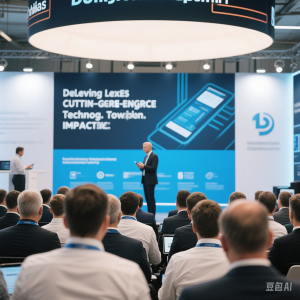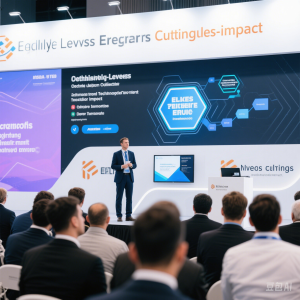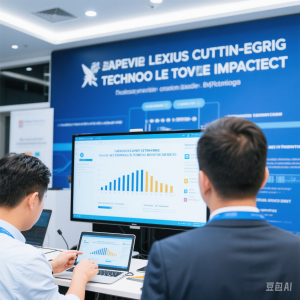Cutting – Edge Technology Insights: Shaping the Future of Development

In the ever – evolving world of technology, developers are constantly on the lookout for the latest cutting – edge trends that can revolutionize the way software is developed. This article delves into some of the most significant and transformative technologies that are currently shaping the future of development.
AI – Driven Software Development: Transforming the Coding Process
- Code Generation and Autocomplete Tools
Artificial intelligence is making significant inroads into the software development process. Tools like GitHub Copilot are changing the way developers write code. Copilot can generate code snippets in real – time as developers type, based on the context and the natural – language comments in the code. For example, when writing a Python function to calculate the sum of a list of numbers, Copilot can suggest the following code:
def sum_list(num_list):
return sum(num_list)
This not only speeds up the coding process but also helps in writing more accurate and efficient code. Additionally, AI – powered autocomplete tools can predict the next lines of code, reducing the time spent on typing and debugging.
2. Automated Testing and Bug Detection
AI is also being used for automated testing and bug detection. Machine – learning algorithms can analyze code patterns and identify potential bugs or vulnerabilities. For instance, DeepCode is an AI – based tool that can scan codebases for security vulnerabilities and coding errors. It can detect issues such as buffer overflows, injection attacks, and improper input validation. By using such tools, developers can catch bugs early in the development cycle, reducing the cost and time required for fixing them.
Blockchain for Secure and Transparent Data Management
- Immutable Data Records
Blockchain technology offers a decentralized and immutable way of storing data. In industries such as finance and healthcare, this is extremely valuable. For example, in a financial transaction system, every transaction can be recorded as a block on the blockchain. Once a block is added to the chain, it cannot be altered, providing a secure and transparent record of all transactions. In healthcare, patient medical records can be stored on a blockchain. This ensures that the records are tamper – proof and can be accessed by authorized parties in a secure manner.
# Simplified example of a blockchain – like data structure in Python
class Block:
def __init__(self, data, previous_hash):
self.data = data
self.previous_hash = previous_hash
self.hash = self.calculate_hash()
def calculate_hash(self):
import hashlib
data_string = str(self.data) + str(self.previous_hash)
return hashlib.sha256(data_string.encode()).hexdigest()
class Blockchain:
def __init__(self):
self.chain = [self.create_genesis_block()]
def create_genesis_block(self):
return Block(“Genesis Block”, “0”)
def add_block(self, new_data):
previous_block = self.chain[-1]
new_block = Block(new_data, previous_block.hash)
self.chain.append(new_block)
- Smart Contracts
Smart contracts are self – executing contracts with the terms of the agreement directly written into code. They are automatically enforced when certain conditions are met. In a supply – chain management system, for example, a smart contract can be used to automate payments. When a supplier delivers goods and the recipient confirms receipt, the smart contract can automatically transfer the payment to the supplier. This reduces the need for intermediaries and speeds up the transaction process.
Internet of Things (IoT): Connecting the Unconnected
- Smart Homes and Buildings
The Internet of Things (IoT) is enabling the creation of smart homes and buildings. Devices such as smart thermostats, lighting systems, and security cameras can be connected to a central network and controlled remotely. For example, a homeowner can use a smartphone app to control the temperature of their home, turn on or off lights, and monitor security cameras while they are away. In a commercial building, IoT sensors can be used to monitor energy consumption, occupancy, and equipment performance. This data can be analyzed to optimize energy usage and improve building management.
- Industrial IoT (IIoT)
In the industrial sector, the IoT is known as the Industrial IoT (IIoT). IIoT is revolutionizing manufacturing and industrial processes. For instance, sensors can be attached to machinery to monitor its performance and detect any signs of wear or malfunction. This allows for predictive maintenance, where maintenance can be scheduled before a breakdown occurs, reducing downtime and increasing productivity. In a factory, IoT – enabled robots can communicate with each other and with human workers, optimizing the production process.
Augmented and Virtual Reality: Redefining User Interfaces
- AR in Training and Education
Augmented Reality (AR) is being widely used in training and education. In the medical field, AR can be used to train surgeons. For example, AR – enabled glasses can display real – time information about a patient’s anatomy during a surgical procedure, helping the surgeon to make more informed decisions. In education, AR can bring textbooks to life. Students can use their smartphones or tablets to view 3D models of historical artifacts, scientific concepts, or geographical features, enhancing their learning experience.
- VR in Gaming and Entertainment
Virtual Reality (VR) has made a significant impact in the gaming and entertainment industry. VR headsets allow gamers to immerse themselves in virtual worlds, providing a more realistic and engaging gaming experience. For example, in a VR – based first – person shooter game, players can look around, move, and interact with the virtual environment in a more natural way. In the entertainment industry, VR is also being used for immersive storytelling, where users can experience movies or live events in a completely new way.
Edge Computing: Bringing Computation Closer to the Source
- Reducing Latency in IoT Applications
Edge computing is crucial for IoT applications as it reduces latency. In a smart city, for example, traffic sensors can generate a large amount of data. Instead of sending all this data to a central cloud server for processing, edge computing allows the data to be processed closer to the source, at the edge of the network. This enables real – time decision – making, such as adjusting traffic lights based on traffic congestion in real – time. In a self – driving car, edge computing can process sensor data from cameras and radar systems in real – time, allowing the car to make quick decisions to ensure safety.
- Enhancing Data Privacy
Edge computing also enhances data privacy. Since data is processed locally at the edge, there is less need to transmit sensitive data over the network to a central server. In a healthcare setting, for example, patient data can be processed locally on edge devices, such as wearable health monitors. Only the relevant summary data needs to be sent to the healthcare provider, protecting the patient’s detailed medical information from potential security breaches during transmission.
In conclusion, these cutting – edge technologies are not only reshaping the software development landscape but also opening up new opportunities for developers to create innovative and impactful applications. By staying updated on these trends, developers can stay ahead in the competitive world of technology.




